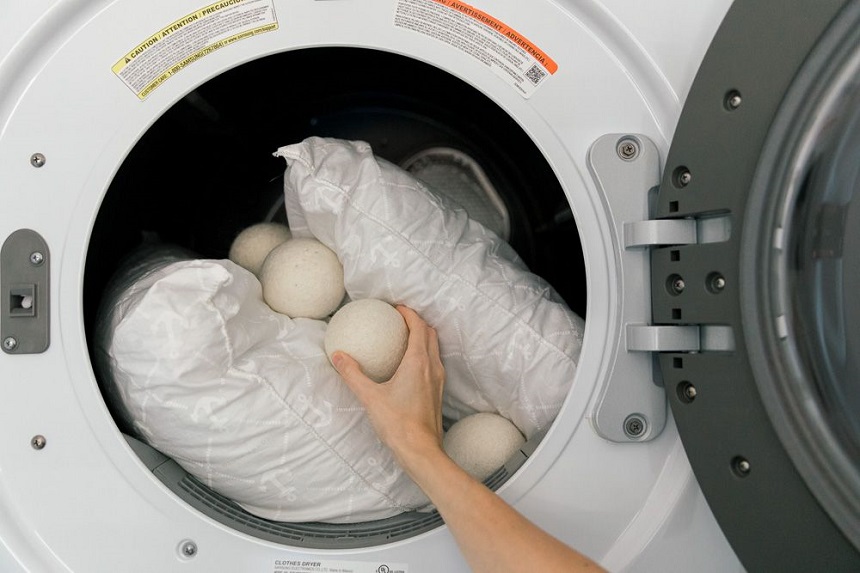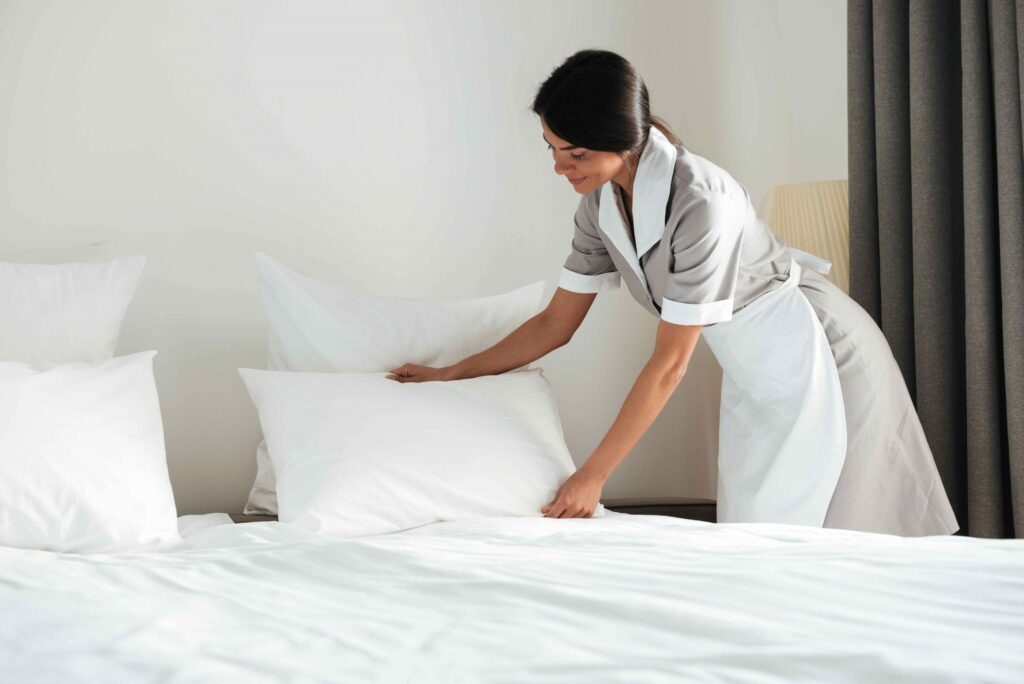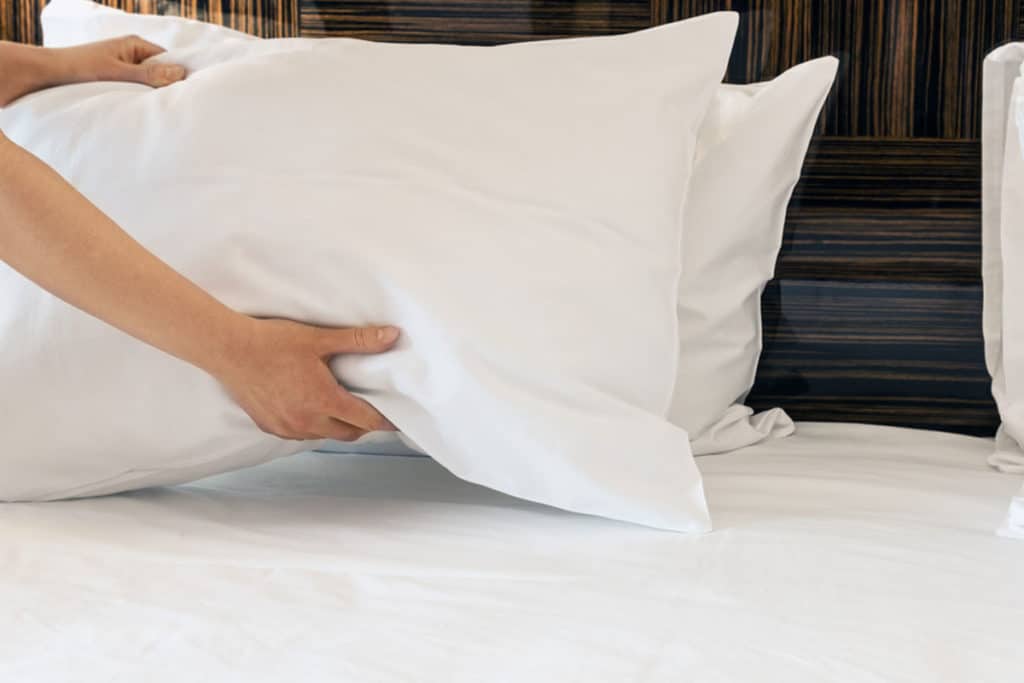

Guardian of our nights, the pillow contributes to the quality of our sleep. However, these products may lose their fluff over time, and no one likes to sleep on a lumpy pillow. But you can bring them back to life using simple DIY techniques. So, in this article, we’ll show you how to fix a lumpy pillow using some fluffing methods, among others.
Pillows can get lumpy with time when the filling accumulates moisture, oil, dirt, and debris. These cause the pillow fibers or foams to clump together. Cotton, feathers, down, and microfiber are all materials prone to clumping. If you’re not ready to change the pillow, the solution is to change the filling (for this, one of the fillings you can try is the Goose Down Feather Stuffing from The East Coast Bedding). The other options include fluffing the pillow by hand, under the sun, or with a machine.
Next, you’ll find out how to fix a lumpy pillow after washing with a dryer or simply by hand.
There are various ways to fluff a pillow by hand.
Hold the ends of each pillow in your hands. Push the corners of the pillow in and out. Do this as if you were playing the accordion, but much faster. You may watch this video to see how it’s done:
You can change the shape of the pillow with your hands so that it is correctly positioned on the bed or fits in the pillowcase. Fluffed pillows improve the look of the bedroom Trusted Source How to Fluff a Pillow - The Sleep Matters Club Fluffing your pillow is important for comfort and can help make your pillow last longer. Read our three easy ways to fluff a pillow here. www.dreams.co.uk . In addition, they are more comfortable and allow you to sleep better.
If they don’t contain too much moisture, you can fluff them up by simultaneously hitting their ends with your fists. Feather pillows are easier to care for because they are made of lighter material. If yours is like this, lightly tapping it should be enough. Next, take the pillow and pat it a few times on the bed to give it a more even appearance.
We mentioned earlier that the causes of lumped-up pillows include the accumulation of dirt, sweat, oil, and moisture. That means you’ll be able to get the filling and cover back to shape by washing them. Then the back-and-forth action produced by the machine can act like you’re fluffing the pillow. So, put the pillow in the machine like a regular washing session.
Note that some pillows like memory foam, latex, and buckwheat pillows cannot be washed in the machine.
Meanwhile, while memory foam and latex pillows lump with time, buckwheat types don’t lump easily except when they come in contact with water.

Put the tennis ball in a sock, tie its end, and put everything in the dryer for a few minutes. This procedure will make the pillows fluff up and give you a good night’s sleep.
Many people find their time limited and prefer to use a different method. If so, your clothes dryer can do the job for you. But you should check the labels first to ensure the cushions are safe to put in the dryer. Then follow the instructions. Organic pillows should be dried on a low setting.
To avoid burning, dryer-safe pillows should be placed on a low or no heat setting. However, this method is not recommended for feather and down pillows as they cannot go in the dryer. Again, memory foam and latex pillows cannot go Trusted Source How to Wash and Dry All of Your Pillows - Amerisleep Washing pillowcases is simple, but it's good practice to wash your pillows regularly, too. In our post, we discuss how to wash and dry all of your pillows. amerisleep.com in the dryer as the heat can damage them.
In general, pillows lose their volume due to humidity, so the sun can help you dry them out and increase this volume.
If you can’t get your pillows to bulk up by hand (by patting and shaping them), leave them in the sun for a few hours. If you have a clothesline outside, you can hang them there. Three to four hours in the sun is enough to absorb the humidity.
Suppose the pillow’s filling still looks lumped up after the methods above, and you’re not ready to change the pillows. In that case, a more inexpensive option is to change the stuffing. And when you decide to do this, ensure you pick the best filling for pillows this time. You may not want to choose the same material that lumped. But if you want a durable, consistent, and resilient filling, choose the Fairfield PF-5 Premium Fiber, which is made from quality poly-fill.
Note that you will only be retaining the pillow cover if it still looks good. If not, you can sew a pillow cover, stuff it and use a pillowcase.
According to the Sleep Foundation, an organization dedicated to the study of sleep, you should change your pillows every one to two years Trusted Source How Often Should You Replace Your Pillows? │ Sleep Foundation Regularly replacing pillows can help you avoid allergic reactions, breakouts, and muscle pain. Learn how to care for your pillows and when to replace them. www.sleepfoundation.org . When that time comes, ensure you have your hands on the best pillows. During that time, the covers of the sheet set should be changed at least once a week; inner protective covers at least once a month, and the pillows would have to go through the washing machine or dry cleaning two or three times a year.
Some tricks to know if the useful life of your pillow has ended are provided below:
Having seen how to fix a lumpy pillow, we urge you to fluff the pillows frequently, so they don’t get lumpy. Do it every day to maintain their shape. This helps the air circulate and prevents the pillow from losing volume.
You should also wash pillowcases regularly. Nobody likes to sleep on a dirty pillowcase. It is a good idea that you wash them once a week. You’ll have to change the pillows every few years. Some cannot fully return to their original shape and must be replaced.






